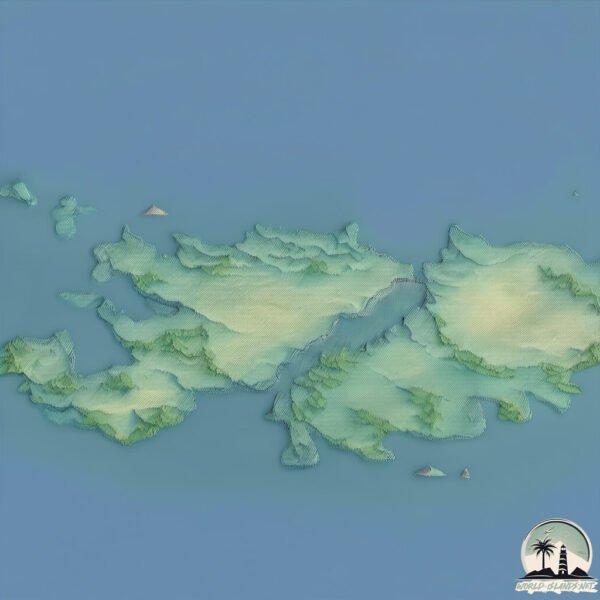Welcome to Rabbit , a Temperate island in the South Atlantic Ocean, part of the majestic Atlantic Ocean. This guide offers a comprehensive overview of what makes Rabbit unique – from its geography and climate to its population, infrastructure, and beyond. Dive into the details:
Geography and size of Rabbit
Size: 1.942 km²Coastline: 7.8 kmOcean: Atlantic OceanSea: South Atlantic OceanContinent: South America
Rabbit is a Small Island spanning 1.9 km² with a coastline of 7.8 km.
Archipel: Falkland Islands – Located in the South Atlantic Ocean, this British Overseas Territory is known for its rugged terrain, biodiversity, and historical significance.
Tectonic Plate: South America – A major plate covering the South American continent and part of the Atlantic Ocean, known for the Andes mountain range and significant seismic and volcanic activity.
The geographic heart of the island is pinpointed at these coordinates:
Climate and weather of Rabbit
Climate Zone: TemperateClimate Details: Subpolar Oceanic ClimateTemperature: Cold Summer
Climate Characteristics: Predominantly cold with cool summers and no dry season. Often found in coastal areas at higher latitudes or on islands.
Topography and nature of Rabbit
Timezone: UTC-04:00Timezone places: America/La_PazMax. Elevation: 76 m Mean Elevation: 25 mVegetation: Open WoodlandTree Coverage: 16%
The mean elevation is 25 m. The highest elevation on the island reaches approximately 76 meters above sea level. The island is characterized by Plains: Flat, low-lying lands characterized by a maximum elevation of up to 200 meters. On islands, plains are typically coastal lowlands or central flat areas.
Dominating Vegetation: Open Woodland
Vegetation: 5 vegetation zones – Highly Diverse Island
Infrastructure and Travelling to Rabbit
Does the island have a public airport? no .
Does the island have a major port? no .
The mean population of Rabbit is 0 per km². Rabbit is Uninhabited. The island belongs to Falkland Is. .
The name of the island resonates across different cultures and languages. Here is how it is known around the world: Arabic: جزيرة فوكلاند الشرقية; German: Ostfalkland; Spanish: Isla Soledad; French: Malouine orientale; Portuguese: Malvina Oriental; Russian: Восточный Фолкленд; Chinese: 索莱达岛
Continuing your journey, Golding is the next notable island, situated merely km away.
The Mystery of Rabbit Island
Imagine an island filled only with rabbits. Okunoshima is a small island in Japan's Inland Sea. It's called "Rabbit Island" because ...
The Mystery of Rabbit Island
Imagine an island filled only with rabbits. Okunoshima is a small ...
Imagine an island filled only with rabbits. Okunoshima is a small island in Japan's Inland Sea. It's called "Rabbit Island" because ...
A whopping 600 rabbits! Trip to Japan's Amazing Rabbit Island
Please experience a travel to Japan! I visited Rabbit Island, which is ...
Please experience a travel to Japan! I visited Rabbit Island, which is full of rabbits. A cute and friendly bunny. The hotel's ...
Rabbits On Okunoshima Island Swarm Tourist
Falkland Is. is classified as Developed region: G7: Group of Seven – Major advanced economies, including Canada, France, Germany, Italy, Japan, the United Kingdom, and the United States. The level of income is High income: OECD.
News – Latest Updates and Headlines from Rabbit
Stay informed with the most recent news and important headlines from Rabbit. Here’s a roundup of the latest developments.
Loading...
Please note: The data used here has been primarily extracted from satellite readings. Deviations from exact values may occur, particularly regarding the height of elevations and population density. Land area and coastline measurements refer to average values at mean high tide.

